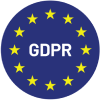Statistics sway people. In fact, people are 87% more likely to trust what you say or write if you have data backing you up. The thing is, 63% of you may have thought “Wow!” or “I bet!” when you read that last sentence. Only 27% might have wondered “Where did that number come from?” Therein lies the problem. Adding a statistic makes things more convincing, but that should only be true if the data is reliable. (And yes, all three of the stats in this introduction were made up!)
Yet, in this era of “fake news,” we have a growing problem with people either blindly accepting data or treating every piece of information, no matter its source, as suspect. At Sogolytics, our lifeblood is data, so we wanted to examine the importance of data literacy whether you’re using or consuming those statistics and the risks associated with failing to use data responsibly. A second article in this series will provide a checklist you can work with to conscientiously use or consume data.
Why do we rely on statistics?
You’ve likely encountered an advertisement telling you that “nine out of 10 dentists” agree such-and-such toothpaste or mouthwash is the best or most effective. You might not be as receptive to the claim if it was more generic, simply telling you dentists agree.
Or perhaps you’ve decided what movie to watch or book to download by looking at a ranking system, like Rotten Tomatoes or Goodreads, to see what percentage of people liked that film or how many stars the population of readers gave a certain book. It saves you the time of having to read all the reviews. Plus, these ranking systems analyze a large volume of responses to, we hope, reduce bias.
In short, statistics add quantifiable evidence. This type of data can be more logical or objective than someone’s qualitative review or opinion. So, yes, statistics — when used appropriately — offer several benefits. Reliable data can:
- Enable us to draw conclusions about a broad sampling of individuals
- Help us broaden our view and understanding by providing input outside of our personal view
- Make it easier to compare things to identify changes and trends
- Enable informed decision-making based on evidence rather than gut instinct
Of course, this is true only of the best-available data. This data is not only collected carefully but also reported responsibly and consumed conscientiously.
Statistics in our day-to-day lives
The examples above used data in personal applications, yet the odds are good that you use quantitative evidence in your professional life, too. If there were a list of buzzwords for the 2020s, “data-driven decision making” would probably be near the top.
Data is used to solve problems and identify opportunities across industries. For example:
- Healthcare professionals use data to gauge the efficacy of a treatment or proactively identify at-risk patients.
- Retailers use customer purchasing data to manage inventory and promotions.
- Logistics companies rely on data to identify which routes are most lucrative or which shipping hubs have the most bottlenecks.
- Credit unions use quantitative evidence to set rates and determine what to offer their members.
- Educators leverage data to determine which students are more likely to succeed at different levels.
Really, when relevant data is effectively collected, analyzed, interpreted, and presented, the applications are nearly limitless. Writing instructors might question the use of adjectives, but in this article the words “relevant” and “effectively,” and the earlier “conscientiously” and “responsibly” are critical. Otherwise, the data is suspect.
Limitations of statistical data
Statistics deal with numbers and figures. On their face these seem logical and definitive. Yet, statistical results have limitations. These include:
- Numbers can easily be misinterpreted.
- Data can be misused by unscrupulous parties.
- Statistical analysis has many variables which, if ignored or expressed incorrectly, can nullify a conclusion.
- Statistics try to capture a story by interpreting information from a large pool of data, which doesn’t always depict the individual experience.
- Reliability of the sample depends on the research design methodology (if you ask seven disgruntled employees about your company’s culture you’ll get a different result than if you survey 7,000 different people who work for you).
Challenges for humans using data
The limitations above are only part of the potential problem. As humans, we tend to like the fast and easy. Typically, we’d prefer to rely on intuition instead of having to go through the many steps of creating, testing, gathering, and validating data.
Daniel Kanneman, who won a 2002 Nobel Prize for his study of human decision-making, suggested we have two systems of decision-making:
- System 1 is more automatic, intuitive thinking. “You’re almost the spectator of the way those thoughts come to mind.”
- System 2 is “more deliberate thinking,” which sees us looking for evidence and applying critical thinking.
System 1 helps us survive, but it’s also more error-prone. The slower thought system, the more analytical one, can produce better decisions. Yet, how often do we default to instinct?
And his research was done more than 20 years ago. Today, gut-based decisions have a less reliable foundation. We are inundated with every more data than ever before. Yet, simultaneously, we have algorithms filtering information so that we see more of the same. You liked this post on games to play with Solo cups? OK, here are 17 more. By the end of the week, you might not be able to imagine a world in which someone is unaware that there are dozens of silly games you can play with Solo cups.
It’s not that intuition is bad. Especially, in this instance, if your gut is telling you to question the data presented to you. The point is that presenting or consuming data requires you to do some critical thinking about context, representation, significance, credibility, and methodology.
Data literacy develops your ability to comprehend and communicate data. It reminds you to analyze and question quantitative evidence (just as you would qualitative data) to make better decisions and drive better outcomes.
Our next article, which provides a checklist of questions to ask yourself when using or receiving data, provides a framework for building up your data literacy.
Ready to build your own reliable data set by collecting feedback from your most relevant audiences? Sign up for a free Sogolytics trial today or connect with an expert to see how Sogolytics can help you get the insights you need.














